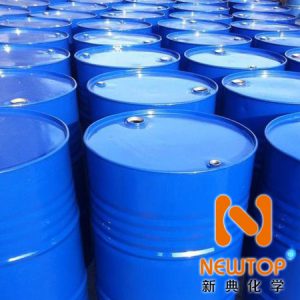Foaming polyurethane catalyst
Overview:
Product name: TAP amine catalyst
Alias: Trimethylaminoethylpiperazine, TAP amine catalyst, foaming polyurethane catalyst
Product description: Typical foaming polyurethane catalyst
CAS No.: 3033-62-3
Molecular weight: 160.3
Physical performance:
| Appearance | colorless transparent liquid |
| Content | ≥99% |
| Density (25°C) | 0.85 |
| Viscosity (25°C) | 1.4mPa·s |
| Moisture wt-% | ≤0.5 |
Main features:
Huntsman polyurethane catalyst TAP is infinitely soluble in water, and the aqueous solution is alkaline. Huntsman TAP is one of the important amine catalysts in the polyurethane industry. TAP has extremely high catalytic activity and selectivity for the foaming reaction, and the pure product has high activity. Usually, it is diluted into a solution with glycols in order to be more convenient to use. These are polyurethane foaming catalysts prepared from 70% ZF-20 and 30% dipropylene glycol solution.
Shelf Life:
Keep it unopened for two years
Storage and transportation:
Should be sealed and stored in a dry, cool and ventilated warehouse

TAP amine catalyst trimethylamine ethyl piperazine foaming polyurethane catalyst
Packaging:
200KG/bucket Storage: It is recommended to store in a dry and cool area with proper ventilation. After the original packaging, please fasten the packaging cover as soon as possible to prevent the product performance from being mixed with other substances such as waterproof grade. Store in a cool, dry place, keep the container tightly closed, and avoid contact with oxides. Do not inhale dust and avoid contact with skin and mucous membranes. Smoking, eating and drinking are prohibited in the workplace. After work, take a shower and change clothes. Store contaminated clothes separately and use them after washing. Maintain good hygiene habits. The company recommends that all polyurethane catalysts be stored in a dry and cool place with proper ventilation. All storage containers must be well sealed to avoid contact with water or other influential substances, as this may change the performance of the product in use. The storage temperature is 10°C to 30°C. Lower or higher temperatures are inappropriate and should be avoided as much as possible.


